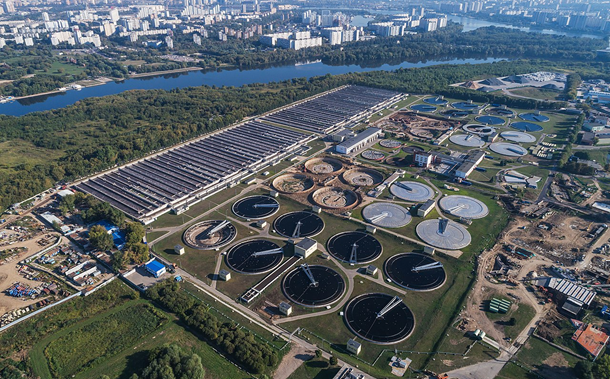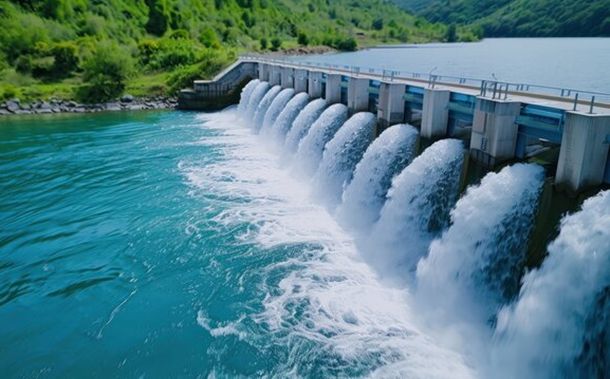Study of Reversible Nozzle Apparatuses Using Euler Methodology and CFD Technologies
Downloads
Doi:10.28991/CEJ-2024-010-11-013
Full Text:PDF
Downloads
[2] Li, J., Wu, T., Cheng, C., Li, J., & Zhou, K. (2024). A Review of the Research Progress and Application of Key Components in the Hydrogen Fuel Cell System. Processes, 12(2), 249. doi:10.3390/pr12020249.
[3] Kim, S. W. (2024). Thrust Augmenter. Japanese Patent, JP2024516044, Patent Attorney Corporation Haruka International Patent Office, Tokyo, Japan. Available online: https://www.freepatentsonline.com/JP2024516044.html (accessed on October 2024). (In Japanese).
[4] Sazonov, Y. A., Mokhov, M. A., Gryaznova, I. V., Voronova, V. V., Tumanyan, K. A., & Konyushkov, E. I. (2023). Thrust Vector Control within a Geometric Sphere, and the Use of Euler's Tips to Create Jet Technology. Civil Engineering Journal (Iran), 9(10), 2516–2534. doi:10.28991/CEJ-2023-09-10-011.
[5] Sazonov, Y. A., Mokhov, M. A., Gryaznova, I. V., Voronova, V. V., Tumanyan, K. A., & Konyushkov, E. I. (2023). Solving Innovative Problems of Thrust Vector Control Based on Euler's Scientific Legacy. Civil Engineering Journal (Iran), 9(11), 2868–2895. doi:10.28991/CEJ-2023-09-11-017.
[6] Sazonov, Y. A., Mokhov, M. A., Gryaznova, I. V., Voronova, V. V., Tumanyan, K. A., & Konyushkov, E. I. (2023). Methods for Regulating Ejector Systems Within Interdisciplinary Research Using Computer Modeling. International Journal on Technical and Physical Problems of Engineering, 15(4), 306–320.
[7] Sazonov, Y. A., Mokhov, M. A., Bondarenko, A. V., Voronova, V. V., Tumanyan, K. A., & Konyushkov, E. I. (2023). Interdisciplinary Studies of Jet Systems using Euler Methodology and Computational Fluid Dynamics Technologies. HighTech and Innovation Journal, 4(4), 703–719. doi:10.28991/HIJ-2023-04-04-01.
[8] Qian, D., & Lawal, A. (2006). Numerical study on gas and liquid slugs for Taylor flow in a T-junction microchannel. Chemical Engineering Science, 61(23), 7609-7625. doi:10.1016/j.ces.2006.08.073.
[9] Descartes, R. (1878). Discourse on the Method of Rightly Conducting one's Reason and Seeking Truth in the Sciences (Vol. 1). Hachette et Cie, Paris, France. (In Russian).
[10] Popper, K. (2002) Conjectures and Refutations: The Growth of Scientific Knowledge. Routledge, Milton Park, United Kingdom.
[11] Fernandes, G., & Maldonado, V. (2024). The U.S. Air Force Next-Generation Air-Refueling System: A Resurgence of the Blended Wing Body? Aerospace, 11(6), 494. doi:10.3390/aerospace11060494.
[12] Xu, S., Liu, Y., Zhang, J., & Zheng, Y. (2024). Preliminary Design and Optimization of Primary Structures for a Tilt-Duct UAV. Aerospace, 11(4), 286. doi:10.3390/aerospace11040286.
[13] Vankan, W. J., Lammen, W. F., Scheers, E., Dewitte, P. J., & Defoort, S. (2024). Concept Evaluation of Radical Short–Medium-Range Aircraft with Turbo-Electric Propulsion. Aerospace, 11(6), 477. doi:10.3390/aerospace11060477.
[14] Wang, J., Zhang, X., Lu, J., & Tang, Z. (2024). Numerical Simulation and Experimental Study on the Aerodynamics of Propulsive Wing for a Novel Electric Vertical Take-Off and Landing Aircraft. Aerospace, 11(6), 431. doi:10.3390/aerospace11060431.
[15] Xia, J., & Zhou, Z. (2024). The Modeling and Control of a Distributed-Vector-Propulsion UAV with Aero-Propulsion Coupling Effect. Aerospace, 11(4), 284. doi:10.3390/aerospace11040284.
[16] Li, X., Dunkin, F., & Dezert, J. (2024). Multi-source information fusion: Progress and future. Chinese Journal of Aeronautics, 37(7), 24–58. doi:10.1016/j.cja.2023.12.009.
[17] Wang, Z., Gong, H., Nie, M., & Liu, X. (2024). Research on Multi-UAV Cooperative Dynamic Path Planning Algorithm Based on Conflict Search. Drones, 8(6), 274. doi:10.3390/drones8060274.
[18] Fang, Z., & Savkin, A. V. (2024). Strategies for Optimized UAV Surveillance in Various Tasks and Scenarios: A Review. Drones, 8(5), 193. doi:10.3390/drones8050193.
[19] Meng, Q., Chen, K., & Qu, Q. (2024). PPSwarm: Multi-UAV Path Planning Based on Hybrid PSO in Complex Scenarios. Drones, 8(5), 192. doi:10.3390/drones8050192.
[20] Sun, T., Sun, W., Sun, C., & He, R. (2024). Multi-UAV Formation Path Planning Based on Compensation Look-Ahead Algorithm. Drones, 8(6), 251. doi:10.3390/drones8060251.
[21] Sieber, C., Vieira da Silva, L. M., Grünhagen, K., & Fay, A. (2024). Rule-Based Verification of Autonomous Unmanned Aerial Vehicles. Drones, 8(1), 26. doi:10.3390/drones8010026.
[22] Barakou, S. C., Tzafestas, C. S., & Valavanis, K. P. (2024). A Review of Real-Time Implementable Cooperative Aerial Manipulation Systems. Drones, 8(5), 196. doi:10.3390/drones8050196.
[23] Gómez Arnaldo, C., Zamarreño Suárez, M., Pérez Moreno, F., & Delgado-Aguilera Jurado, R. (2024). Path Planning for Unmanned Aerial Vehicles in Complex Environments. Drones, 8(7), 288. doi:10.3390/drones8070288.
[24] Huang, G., Hu, M., Yang, X., Wang, X., Wang, Y., & Huang, F. (2024). A Review of Constrained Multi-Objective Evolutionary Algorithm-Based Unmanned Aerial Vehicle Mission Planning: Key Techniques and Challenges. Drones, 8(7), 316. doi:10.3390/drones8070316.
[25] Aben, E., Yussupova, S., Akhmetkanov, D., Yelzhanov, E., & Sarybayev, N. (2024). Research into Uranium Characteristics and Content in a Pregnant Solution During Leaching with Oxygen Saturation. Civil Engineering Journal (Iran), 10(5), 1606–1615. doi:10.28991/CEJ-2024-010-05-016.
[26] Bu, Y., Yan, Y., & Yang, Y. (2024). Advancement Challenges in UAV Swarm Formation Control: A Comprehensive Review. Drones, 8(7), 320. doi:10.3390/drones8070320.
[27] Yu, H., Yang, X., Zhang, Y., & Jiang, Z. (2024). Cooperative Target Fencing Control for Unmanned Aerial Vehicle Swarm with Collision, Obstacle Avoidance, and Connectivity Maintenance. Drones, 8(7), 317. doi:10.3390/drones8070317.
[28] Ligotskiy, D. N., & Argimbaeva, K. V. (2024). The sectional formation technology of an anthropogenic deposit with its subsequent mining using a hydraulic pull shovel. Sustainable Development of Mountain Territories, 16(1), 111–121. doi:10.21177/1998-4502-2024-16-1-111-121.
[29] Gil, J. (2023). Modular unmanned aerial vehicle system for adaptable parcel delivery. US Patent 11,794,931 B2, United States Patent, Alexandria, United States. Available online: https://www.freepatentsonline.com/11794931.pdf (accessed on October 2024).
[30] Carmack, S G., Narasimha R. L., & Nima S. M. (2017). Using multirotor lifters to deploy fixed wing aircraft. US Patent 9,630,712 B1, United States Patent, Alexandria, United States. Available online: https://www.freepatentsonline.com/9630712.pdf (accessed on October 2024).
[31] Bosma, M. B. (2023). Helicopter winch cable stabilizer. US Patent 11,618,584 B2, United States Patent, Alexandria, United States. Available online: https://www.freepatentsonline.com/11618584.pdf (accessed on October 2024).
[32] Yılmazer, C., & Arı Güner, H. A. (2024). Physical and Numerical Modeling of Flow in a Meandering Channel. Water (Switzerland), 16(11), 1547. doi:10.3390/w16111547.
[33] Famellos, P., Skevas, A., Koutsiadis, A., Koutsouras, C., & Panagiotou, P. (2024). Design and Analysis of a Base Bleed Unit for the Drag Reduction of a High-Power Rocket Operating at Transonic Speeds. Aerospace, 11(5), 385. doi:10.3390/aerospace11050385.
[34] Papadakis, N., & Condaxakis, C. (2024). An Experimental Performance Assessment of a Passively Controlled Wind Turbine Blade Concept: Part B”Material Oriented with Glass-Fiber-Reinforced Polymer. Energies, 17(13), 3286. doi:10.3390/en17133286.
[35] Koca, K., & Genç, M. S. (2024). Role of Partial Flexibility on Flow Evolution and Aerodynamic Power Efficiency over a Turbine Blade Airfoil. Aerospace, 11(7), 571. doi:10.3390/aerospace11070571.
[36] Meng, Q., Hu, Y., Wei, W., Yao, Z., Ke, Z., Zhang, H., Zhao, M., & Yan, Q. (2024). Aerodynamic Hinge Moment Characteristics of Pitch-Regulated Mechanism for Mars Rotorcraft: Investigation and Experiments. Drones, 8(7), 277. doi:10.3390/drones8070277.
[37] Dong, W., Wang, X., Lin, Q., Cheng, C., & Zhu, L. (2024). A Weighted Feature Fusion Model for Unsteady Aerodynamic Modeling at High Angles of Attack. Aerospace, 11(5), 339. doi:10.3390/aerospace11050339.
[38] Farí¬, S., Sagliano, M., Macés Hernández, J. A., Schneider, A., Heidecker, A., Schlotterer, M., & Woicke, S. (2024). Physical Modeling and Simulation of Reusable Rockets for GNC Verification and Validation. Aerospace, 11(5), 337. doi:10.3390/aerospace11050337.
[39] Wu, Q., & Ren, Q. (2024). Tuning the Ballistic Performance of a Single-Burning-Rate Grain Solid Rocket Motor via New Discontinuous Embedded Metal Wires. Aerospace, 11(4), 308. doi:10.3390/aerospace11040308.
[40] Georgievich, D. G., Sergeevich, K. A., Fedorovich, V. V., & Yurevich, S. Y. (2018). Thrust cut-off assembly of solid-propellant rocket engine. RF Patent RU 2 664 638 C2, Russian Federation, Moscow, Russia. Available online: https://www.fips.ru/ofpstorage/Doc/IZPM/RUNWC1/000/000/002/664/638/ИЗ-02664638-00001/document.pdf (accessed on October 2024). (In Russian).
[41] Permitin, A. V., & Pavel A. S. (2019). Solid rocket engine cutout assembly. RF Patent RU 2 691 002 C1, Russian Federation, Moscow, Russia. Available online: https://www.fips.ru/ofpstorage/Doc/IZPM/RUNWC1/000/000/002/691/002/ИЗ-02691002-00001/document.pdf (accessed on October 2024). (In Russian).
[42] Arkhipov, V. A., Sergej, S. B., Aleksandr, B. V., Aleksandr S. Z., Boris, V. P., & Lilija, A. S. (2014). Hybrid rocket engine. RF Patent RU 2 569 960 C1, Russian Federation, Moscow, Russia. Available online: https://new.fips.ru/Archive/PAT/2015FULL/2015.12.10/DOC/RUNWC1/000/000/002/569/960/DOCUMENT.PDF (accessed on October 2024). (In Russian).
[43] Yun, M. S., Roh, T. S., & Lee, H. J. (2024). Analysis of Development Trends for Rotating Detonation Engines Based on Experimental Studies. Aerospace, 11(7), 570. doi:10.3390/aerospace11070570.
[44] Shao, S., Yue, S., Qiao, H., Liu, P., & Ao, W. (2024). Numerical and Experimental Analyses of the Effect of Water Injection on Combustion of Mg-Based Hydroreactive Fuels. Aerospace, 11(7), 542. doi:10.3390/aerospace11070542.
[45] Techavijit, P., Sukchalerm, P., Wongphuangfuthaworn, N., & Kiyapaet, S. (2024). Fly-around-the-World Near-Space Picosatellite for Cost-Effective School Space Projects. Aerospace, 11(7), 557. doi:10.3390/aerospace11070557.
[46] Caballero-Martin, D., Lopez-Guede, J. M., Estevez, J., & Graña, M. (2024). Artificial Intelligence Applied to Drone Control: A State of the Art. Drones, 8(7), 296. doi:10.3390/drones8070296.
[47] Wang, H., Zhou, D., Zhang, Y., & Lou, C. (2024). Compound Control Design of Near-Space Hypersonic Vehicle Based on a Time-Varying Linear Quadratic Regulator and Sliding Mode Method. Aerospace, 11(7), 567. doi:10.3390/aerospace11070567.
[48] Ren, Y., Zhu, F., Sui, S., Yi, Z., & Chen, K. (2024). Enhancing Quadrotor Control Robustness with Multi-Proportional–Integral–Derivative Self-Attention-Guided Deep Reinforcement Learning. Drones, 8(7), 315. doi:10.3390/drones8070315.
[49] Kindström Andersson, K., & Andersson, K. E. (2024). Development of Scenarios as Problem-Space Descriptions in Aerospace Conceptual Design. Aerospace, 11(7), 565. doi:10.3390/aerospace11070565.
[50] Tyapkin, V. N., Korovin, A. V., Nerovny, V. V., Ishchuk, I. N., & Kabulova, E. G. (2018). Precision characteristics of the ground-based user equipment of satellite radio navigation system employing pseudolites in noisy environments. International Review of Aerospace Engineering, 11(2), 58–65. doi:10.15866/irease.v11i2.13938.
[51] Xi, A., & Cai, Y. (2024). Deep Reinforcement Learning-Based Differential Game Guidance Law against Maneuvering Evaders. Aerospace, 11(7), 558. doi:10.3390/aerospace11070558.
[52] Cao, W., Huang, J., & Chang, S. (2024). Data-Driven-Method-Based Guidance Law for Impact Time and Angle Constraints. Aerospace, 11(7), 540. doi:10.3390/aerospace11070540.
[53] Xie, Z., Wei, C., Cui, N., & Guan, Y. (2024). An Analytical Reentry Solution Based Online Time-Coordinated A* Path Planning Method for Hypersonic Gliding Vehicles Considering No-Fly-Zone Constraint. Aerospace, 11(6), 499. doi:10.3390/aerospace11060499.
[54] Ansoff, H. I., Kipley, D., Lewis, A. O., Helm-Stevens, R., & Ansoff, R. (2019). Implanting Strategic Management. Springer International Publishing, Cham, Switzerland. doi:10.1007/978-3-319-99599-1.
[55] Yachmenova, L. A., Syrkov, A. G., & Kabirov, V. R. (2023). Features of obtaining surface-modified metals with minimal carbon footprint. Non-Ferrous Metals, 55(2), 33–40. doi:10.17580/nfm.2023.02.06.
[56] Heidegger, M. (1954). The question of technology. Vorträge und Aufsätze, 5, 9-40. (In German)
[57] Sokolov, E.Y., & Zinger, N. M. (1989). Jet units (3rd Ed.). Energiya, Moscow, Russia. (in Russian).
[58] Pirozelli, P. (2019). Thomas Kuhn's theory of rationality. Manuscrito, 42(3), 1–46. doi:10.1590/0100-6045.2019.V42N3.PP.
[59] Sun, T. (2024). The Art of War. Available online: https://classics.mit.edu/Tzu/artwar.html (accessed on October 2024).
[60] Hübner, K. (1983). The Critique of Scientific Reason. University of Chicago Press, Chicago, United States.
[61] Zhou, J., Zhang, H., Hua, M., Wang, F., & Yi, J. (2024). P-DRL: A Framework for Multi-UAVs Dynamic Formation Control under Operational Uncertainty and Unknown Environment. Drones, 8(9), 475. doi:10.3390/drones8090475.
[62] Wei, S.-S., Li, M.-C., Lai, A., Chou, T.-H., & Wu, J.-S. (2024). A Review of Recent Developments in Hybrid Rocket Propulsion and Its Applications. Aerospace, 11(9), 739. doi:10.3390/aerospace11090739.
[63] Sánchez Muñoz, J. A., Lagarza-Cortés, C., & Ramírez-Cruz, J. (2024). Aerodynamic Drag Coefficient Prediction of a Spike Blunt Body Based on K-Nearest Neighbors. Aerospace, 11(9), 757. doi:10.3390/aerospace11090757.
[64] Zhao, Z., Wan, Y., & Chen, Y. (2024). Deep Reinforcement Learning-Driven Collaborative Rounding-Up for Multiple Unmanned Aerial Vehicles in Obstacle Environments. Drones, 8(9), 464. doi:10.3390/drones8090464.
[65] Zhao, L., Chen, B., & Hu, F. (2024). Research on Cooperative Obstacle Avoidance Decision Making of Unmanned Aerial Vehicle Swarms in Complex Environments under End-Edge-Cloud Collaboration Model. Drones, 8(9), 461. doi:10.3390/drones8090461.
[66] Abu Salem, K. (2024). The Key Role of Research in Flight Dynamics, Control, and Simulation for Advancing Aeronautical Sciences. Aerospace, 11(9), 734. doi:10.3390/aerospace11090734.
- Authors retain all copyrights. It is noticeable that authors will not be forced to sign any copyright transfer agreements.
- This work (including HTML and PDF Files) is licensed under a Creative Commons Attribution 4.0 International License.![]()














